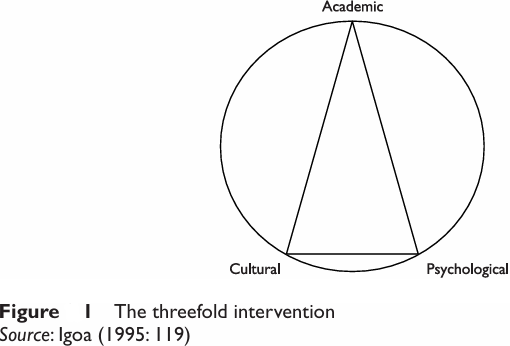


 Grammar
Grammar
 Tenses
Tenses
 Present
Present
 Past
Past
 Future
Future
 Parts Of Speech
Parts Of Speech
 Nouns
Nouns
 Verbs
Verbs
 Adverbs
Adverbs
 Adjectives
Adjectives
 Pronouns
Pronouns
 Pre Position
Pre Position
 Preposition by function
Preposition by function 
 Preposition by construction
Preposition by construction
 Conjunctions
Conjunctions
 Interjections
Interjections
 Grammar Rules
Grammar Rules
 Linguistics
Linguistics
 Semantics
Semantics
 Pragmatics
Pragmatics
 Reading Comprehension
Reading Comprehension|
Read More
Date: 2025-04-05
Date: 2025-03-29
Date: 2025-03-27
|
Cultural issues and schools Conclusion
The intention of the provision of any education service is to grant all learners access to academic intervention and thus hopefully to academic achievement. Educators teaching learners from various cultural backgrounds thus need to look at them all as individuals and to adapt community practice and policies so that everyone can feel included and valued. Igoa (1995) developed an approach to teach immigrant children that encompasses their cultural, academic and psychological needs. Figure 1, entitled ‘The Threefold Intervention’, illustrates the areas of intervention Igoa focuses on around the circle that represents the whole child. She writes:

When the child feels in balance with these 3 aspects of herself or himself, the child in school is fully alive… Sometimes I focus on the cultural, then the psychological, then both, but I always keep the academic clearly in focus, so the child understands the importance of school. (ibid.: 119)
This example is just one possible approach, but it is one that focuses on all the needs of the individual, and not primarily on their cultural group background.
Finally, therefore, we have hopefully illustrated the need for schools and educators to create positive conditions for learning, where culture, climate and interpersonal relationships, through the revision of policies and practices undergo substantial changes: ‘The very climate of schools needs to undergo a critical transformation in order to make it clear that students of diverse backgrounds are expected and encouraged to learn’ (Nieto, 1999: 101).
Key issues
It is anticipated that you will now:
■ have an understanding of what culture is;
■ understand the need to value learners language and cultures;
■ recognize the importance of having high expectations of all learners, whatever their cultural background;
■ be able to recognize in a classroom where issues for learners from other cultures may cause difficulties;
■ be aware of the need for policies and practices in a school to reflect the cultural diversity of all its different populations.
|
|
|
|
لخفض ضغط الدم.. دراسة تحدد "تمارين مهمة"
|
|
|
|
|
|
|
طال انتظارها.. ميزة جديدة من "واتساب" تعزز الخصوصية
|
|
|
|
|
|
|
مشاتل الكفيل تزيّن مجمّع أبي الفضل العبّاس (عليه السلام) بالورد استعدادًا لحفل التخرج المركزي
|
|
|